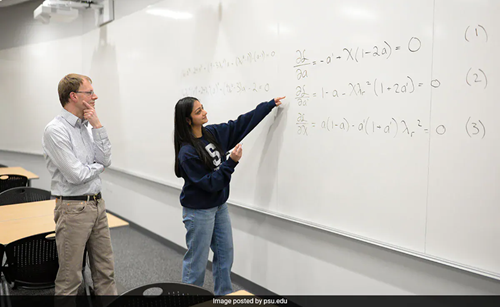In a monumental achievement that has sent ripples through the global scientific community, Divya Tyagi, an Indian-origin aerospace engineering student at Pennsylvania State University, has solved a mathematical problem in aerodynamics that had stumped researchers for nearly 100 years.
The century-old puzzle, originally developed by British aerodynamicist Hermann Glauert, is foundational to the field of aerodynamics and, specifically, wind turbine design. While Glauert’s work maximized the efficiency of a turbine’s power output (the power coefficient), it critically ignored other real-world structural forces.
Tyagi’s groundbreaking research introduces an “addendum to Glauert’s problem,” which for the first time analytically accounts for key factors Glauert’s original work missed:
Total Force and Moment Coefficients: The structural forces and bending moments acting on the rotor blades.
Optimal Aerodynamic Performance: A comprehensive framework to maximize power output while ensuring the turbine can withstand stress.
Using the calculus of variations, Tyagi developed an elegant and simplified solution that makes these complex calculations practical for modern engineers.
A Global Impact
This breakthrough is not just a mathematical curiosity; it is set to revolutionize the renewable energy sector. Tyagi’s refined model is expected to influence the next generation of wind turbines, leading to designs that are more efficient, more resilient, and more cost-effective. Even a 1% improvement in a large turbine’s power coefficient, as suggested by her work, could significantly increase energy output—enough to power entire neighborhoods.
The research began as Tyagi’s undergraduate honors thesis and has already been published in the journal Wind Energy Science. Her adviser, Professor Sven Schmitz, lauded her persistence, noting that she was the only student out of four he challenged with the problem who successfully saw it through.
Currently pursuing her master’s degree, Tyagi continues to conduct cutting-edge research in computational fluid dynamics, with a project supported by the U.S. Navy focused on improving helicopter flight simulations and aviation safety. Her success firmly underscores the powerful contribution of Indian minds to global innovation.







